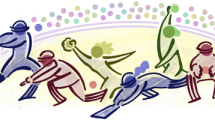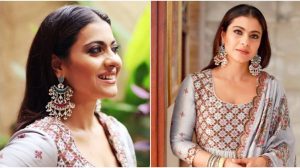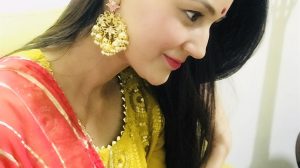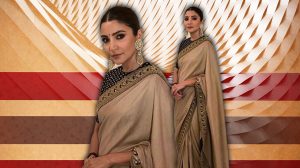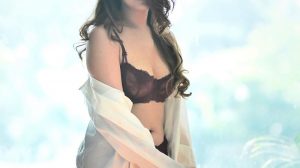Patachitra, an intricate form of scroll painting, is one of the most exquisite and enduring art traditions of Odisha, India. Rooted deeply in the state’s cultural and religious life, Patachitra, which literally means “cloth painting,” is characterized by its detailed and narrative style. This ancient art form, practiced for centuries, continues to thrive in the hands of skilled artisans, preserving its legacy while adapting to modern sensibilities. This article explores the history, techniques, themes, and contemporary significance of Patachitra in Odisha.
|| By Areeba Tasneem
The origins of Patachitra in Odisha are believed to date back to the 5th century BC. These paintings are intrinsically linked to the worship of Lord Jagannath, the presiding deity of the famous Jagannath Temple in Puri. The tradition is said to have begun with the temple’s rituals, where chitrakars (artists) created images of deities on cloth or dried palm leaves. Over time, the practice evolved into a distinct art form known for its vibrant colors and intricate details.
The Puri district, particularly the village of Raghurajpur, is renowned for its Patachitra artisans. This village is a living museum, where almost every household is involved in crafting these beautiful paintings. The art has been passed down through generations, with skills and techniques taught from an early age.
The creation of Patachitra involves a meticulous and time-consuming process, requiring great skill and patience. Traditionally, the artists use natural materials for both the canvas and the colors. The canvas, known as patta, is made by soaking, drying, and processing cloth or palm leaves. This cloth is then coated with a mixture of chalk and tamarind seed paste to create a smooth surface for painting.
The colors used in Patachitra are derived from natural sources. White is obtained from conch shells, black from burnt coconut shells, yellow from haritala stones, red from hingula stones, and green from leaves. These natural pigments are mixed with gum or resin to make them adhere to the canvas.
Once the canvas and colors are prepared, the artist sketches the outlines with a fine brush. This is followed by filling in the colors, starting with the lighter shades and progressing to the darker ones. The final step involves adding intricate details and borders, which are the hallmarks of Patachitra. The precision and attention to detail in these paintings are extraordinary, reflecting the artist’s dedication and expertise.
The themes of Patachitra are predominantly religious and mythological. The most common subjects are the stories from Hindu epics like the Ramayana and Mahabharata, and the various incarnations of Lord Vishnu. The depiction of the Jagannath trio – Lord Jagannath, Balabhadra, and Subhadra – is particularly significant. These deities are often shown in vibrant colors, with expressive features and elaborate adornments.
In addition to religious themes, Patachitra also includes folk tales and contemporary subjects. The Panchatantra stories, the tales of Lord Krishna, and scenes from rural life are frequently illustrated. The paintings often include elaborate borders filled with floral and geometric patterns, adding to their visual appeal.
A distinctive feature of Patachitra is the absence of empty space. Every inch of the canvas is filled with intricate designs, creating a sense of richness and complexity. The use of bold lines, detailed motifs, and a limited color palette gives these paintings a unique and recognizable style.
Patachitra holds a significant place in the cultural and religious life of Odisha. These paintings are not merely decorative but are imbued with deep spiritual meaning. During the famous Rath Yatra festival in Puri, when the wooden idols of Jagannath, Balabhadra, and Subhadra are taken out in a grand procession, Patachitra plays a crucial role. The chitrakars create Patachitra paintings to substitute for the deities during their 15-day rest period known as Anavasara, when the idols are believed to fall ill and are kept away from public view.Beyond religious festivals, Patachitra is also used in various rituals and ceremonies. These paintings are often used as offerings in temples and are believed to bring good fortune and protection. They are also an integral part of traditional home décor in Odisha, adorning walls and altars.
While Patachitra has ancient roots, it has adapted to contemporary times, finding new forms and applications. The traditional themes and techniques continue to be respected, but modern Patachitra artists are experimenting with new subjects and media. Today, Patachitra is not limited to cloth and palm leaves; it can be found on a variety of surfaces such as T-shirts, sarees, and even home décor items like lampshades and wall hangings.
The market for Patachitra has expanded beyond Odisha, reaching national and international audiences. The Indian government and various non-governmental organizations have taken steps to promote and preserve this art form, providing platforms for artists to showcase their work. Exhibitions, workshops, and online platforms have played a significant role in popularizing Patachitra and making it accessible to a wider audience.
Despite its rich heritage, Patachitra faces several challenges. The commercialization of the art has led to concerns about maintaining its authenticity and quality. Mass-produced imitations using synthetic materials and shortcuts undermine the traditional techniques and the painstaking effort involved in creating genuine Patachitra.
Efforts to preserve this art form involve educating the public about its cultural significance and promoting the use of traditional materials and methods. Organizations and artists are working together to ensure that the younger generation of chitrakars is trained in the traditional ways, preserving the purity of the art. Initiatives such as the GI (Geographical Indications) registration for Patachitra of Odisha also help in safeguarding its uniqueness and authenticity.
Patachitra of Odisha is more than just an art form; it is a living tradition that embodies the state’s cultural and spiritual ethos. The intricate designs, vibrant colors, and profound themes make Patachitra a unique expression of Odisha’s artistic heritage. As it continues to evolve and adapt to modern times, the essence of Patachitra remains rooted in its rich history and traditions. Efforts to preserve and promote this art form are crucial in ensuring that this cultural treasure continues to thrive for generations to come. Whether through traditional depictions of deities or contemporary adaptations, Patachitra remains a testament to the enduring spirit of Odisha’s artistic legacy.










